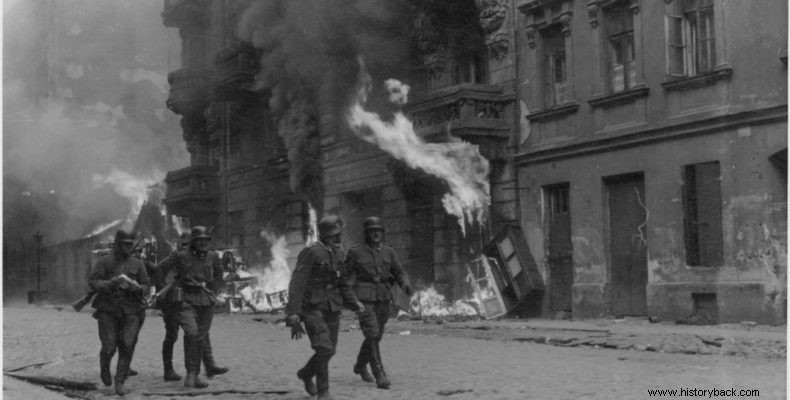
On October 2, 1940, the German occupying governor of Warsaw, Ludwig Fischer, signed the decree to "cut off" the Jewish quarter from the rest. Within a few days the capital of Poland, where the largest Jewish community lived before the war, would turn into the largest ghetto on European soil. When the Wehrmacht invaded Poland in the fall of 1939, there were 3.5 million Jews living in the country, who made up 10% of the total population. The conquerors seized their property and imprisoned them in 400 ghettos.
In Warsaw the Jewish quarter was permanently sealed off from the rest of the city with a 3.5 meter wall and barbed wire on November 16, 1940. Jews caught without permission outside the ghetto faced the death penalty. After transporting Jews from various parts of Poland to the Warsaw Ghetto, up to 450,000 lived there in just 4 square kilometers.
Nazi tourist destination
"The sanitary conditions were dramatic. Tuberculosis and typhus became a daily occurrence. Every morning there were corpses in front of the doors being buried in mass graves," wrote the later famous German literary critic Marcelle Reich-Ranicki, a survivor of the Warsaw ghetto. For the German occupiers, the "Jewish quarter" turned into a tourist destination. The Nazi organization KdF (Kraft durch Freude) for example offered bus tours through the narrow streets of the ghetto.
"Hunger was the most frequent cause of death. According to a German army decree each inhabitant of the ghetto received 184 calories, while the norm for the rest of Poland was 634 and for the Germans 2,310 calories," writes Jewish historian Emanuel Ringelblum about daily life in the Warsaw ghetto. After the Nazis decided on the so-called "Final Solution to the Jewish Question" in 1942, the transfer of 300,000 Warsaw Jews to the Treblinka extermination camp 80 kilometers away began. 35,000 mostly young people remained in the ghetto, who were officially forced to work in German factories. About 25,000 had gone underground, determined to resist to the end rather than die in the gas chambers.
The uprising in the ghetto
When on April 19, 1943 SS units invaded the ghetto to take the remaining Jews to the concentration camps they were attacked. No one expected that Jews are able to resist. "The insurgents attacked vehicles and tanks with Molotov cocktails. Within half an hour our forces had been dispersed and morale had collapsed," noted SS team leader Jürgen Stroup. Ultimately, however, the superior weaponry of the German forces led to the crushing of the resistance fighters. When the Great Synagogue was destroyed on May 16, 1943, Jürgen Stroop wrote:"The Jewish quarter of Warsaw no longer exists."
In the following decades the Warsaw Ghetto Uprising was almost forgotten. Until in 1970 the then chancellor of Germany Willy Brandt, initiator of the so-called Ostpolitik, the political opening of Germany towards socialist Eastern Europe, on his first visit to Warsaw, knelt in front of the monument to the heroes of the ghetto. The kneeling of the German chancellor was, however, hushed up by the Polish government, which always spoke of 6 million Polish victims without mentioning that they were Polish Jews.
Today the Polish government refers to "Polish-Jewish relations as a history of tolerance" and never tires of underlining that "heroic Poles risked their lives to save Jews," says Polish historian Mariusz Jaszab of the POLIN Museum of Polish Jews in Warsaw. As a tour guide for students and tourists in the area where the Warsaw Ghetto was located, he is nevertheless proud that the memory of this dark chapter is kept alive. In addition to the heroes' monument, there are many graffiti scattered in the surrounding streets, as well as a number of commemorative plaques. All this would have been unthinkable before.
SOURCE:DW
